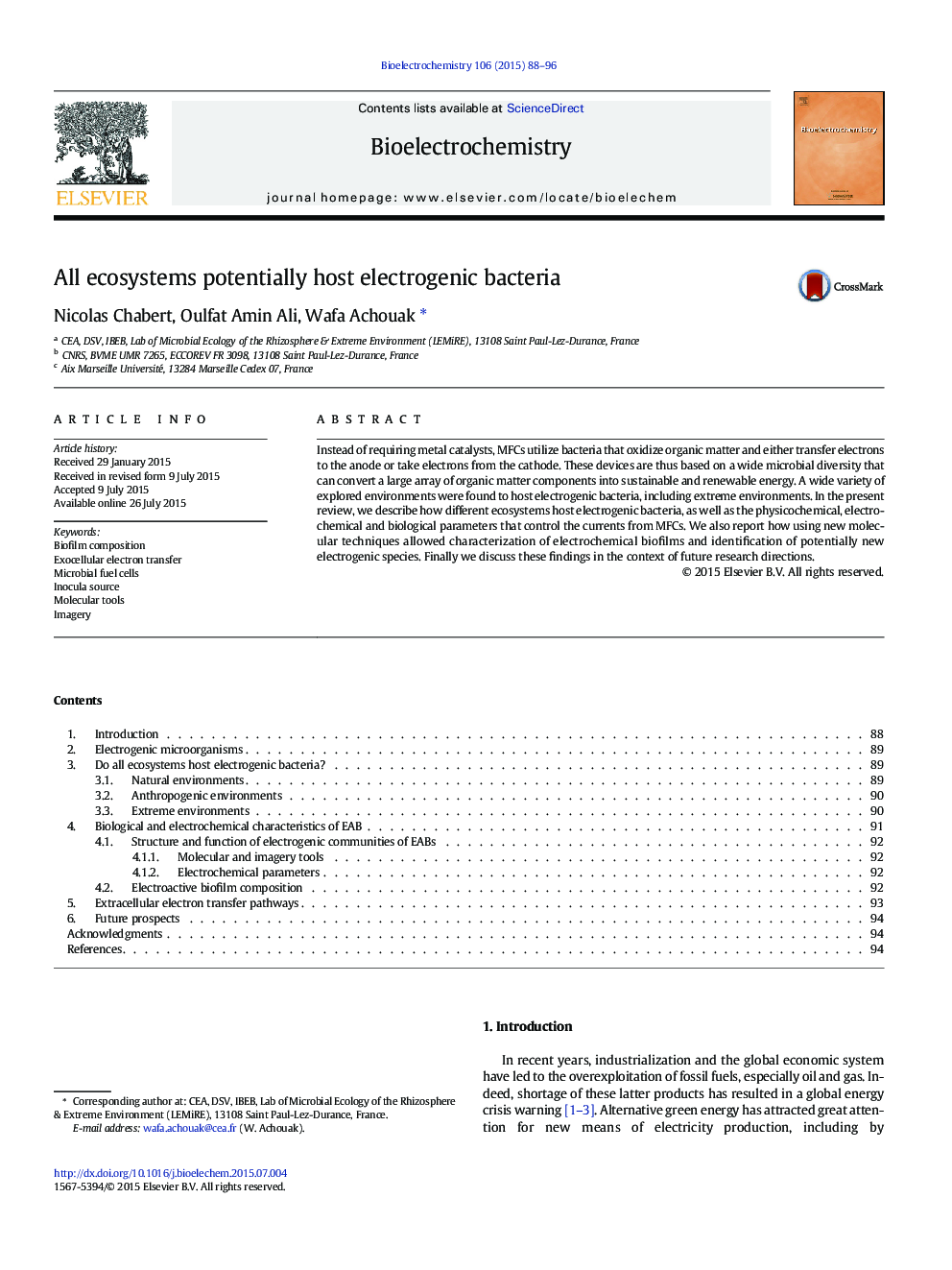| Article ID | Journal | Published Year | Pages | File Type |
|---|---|---|---|---|
| 1267865 | Bioelectrochemistry | 2015 | 9 Pages |
•Terrestrial environments are under-explored than aquatic ones.•Extreme environments represent good reservoir of electrogenic bacteria.•Molecular and imagery tools are essential to determine electroactive biofilm architecture.•Deltaproteobacteria are commonly found on anodes formed in different environments.•Genetic tools are required to improve electrochemical performances.
Instead of requiring metal catalysts, MFCs utilize bacteria that oxidize organic matter and either transfer electrons to the anode or take electrons from the cathode. These devices are thus based on a wide microbial diversity that can convert a large array of organic matter components into sustainable and renewable energy. A wide variety of explored environments were found to host electrogenic bacteria, including extreme environments. In the present review, we describe how different ecosystems host electrogenic bacteria, as well as the physicochemical, electrochemical and biological parameters that control the currents from MFCs. We also report how using new molecular techniques allowed characterization of electrochemical biofilms and identification of potentially new electrogenic species. Finally we discuss these findings in the context of future research directions.
